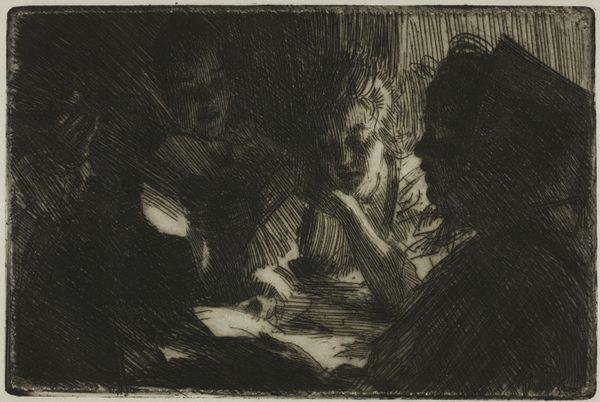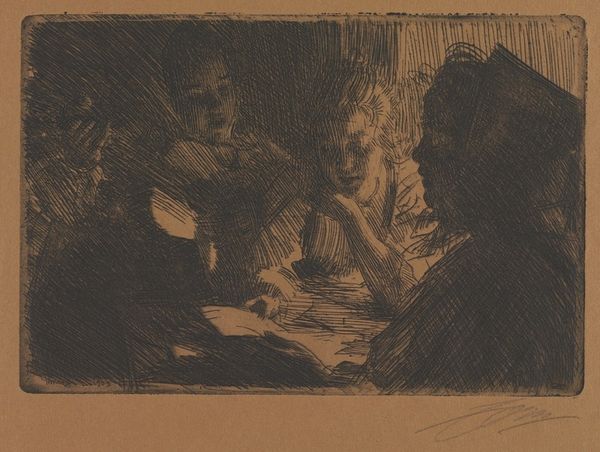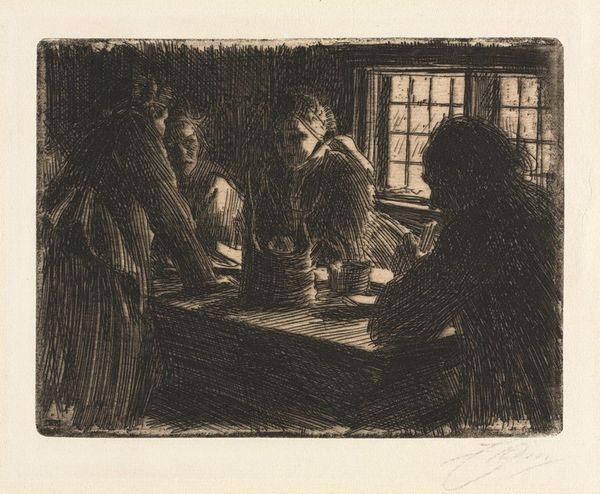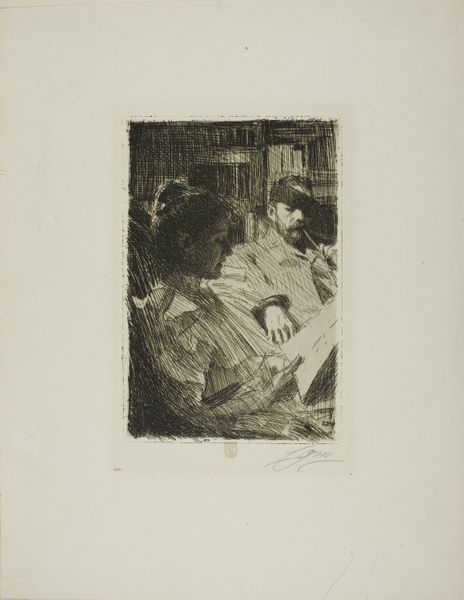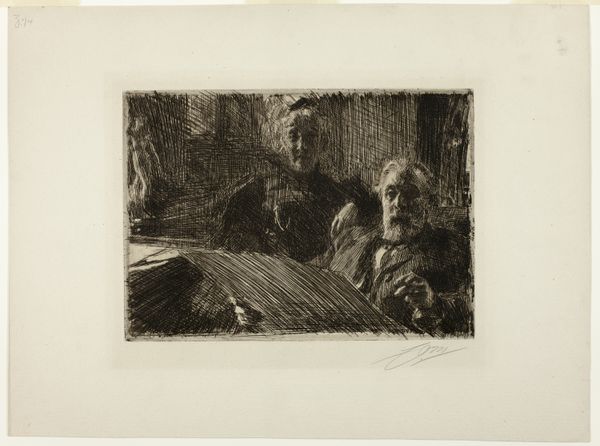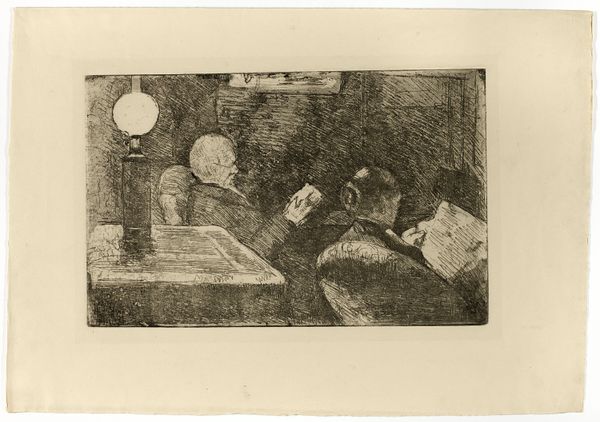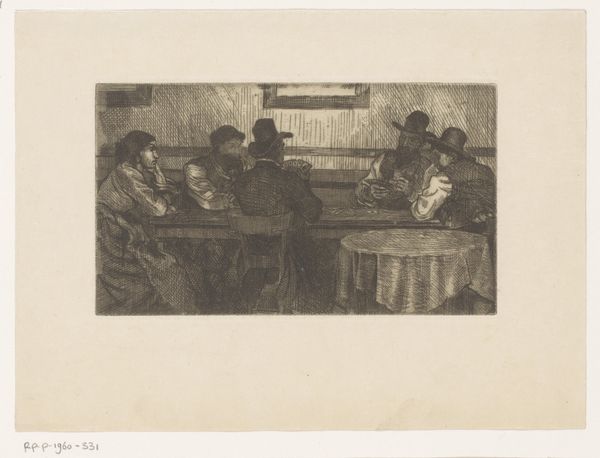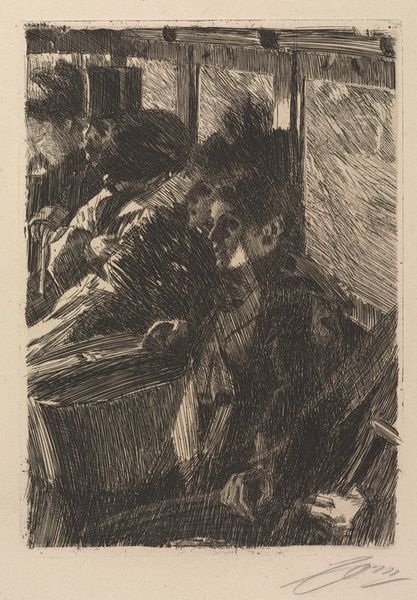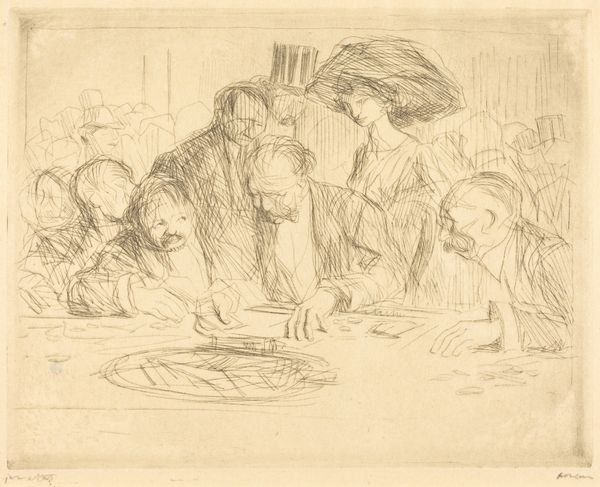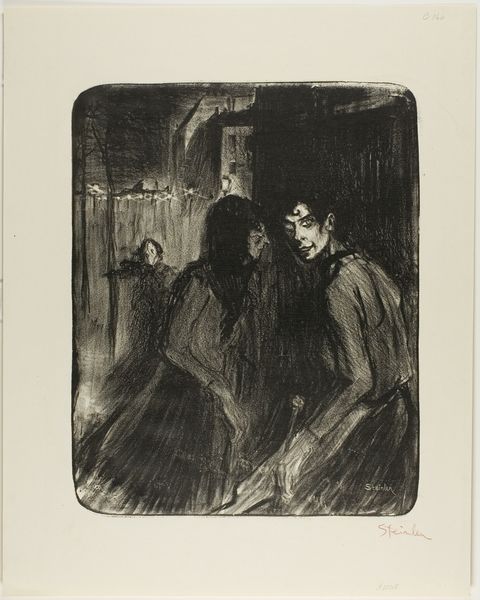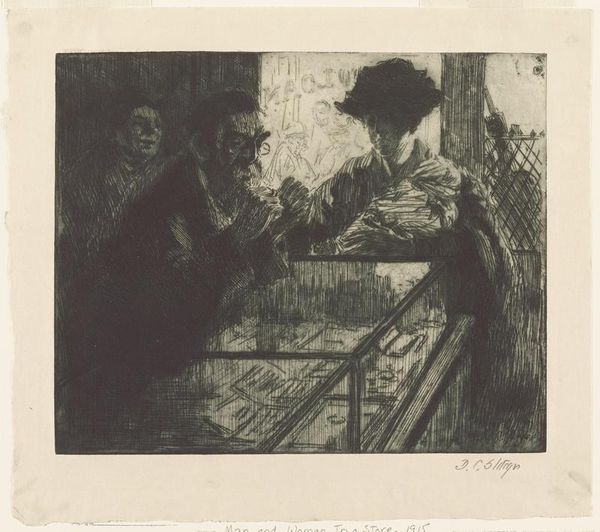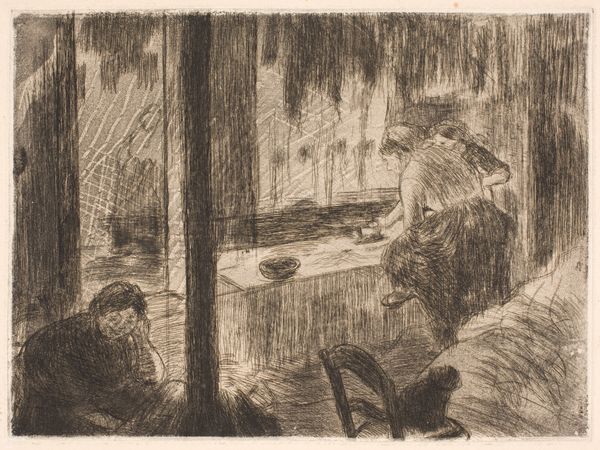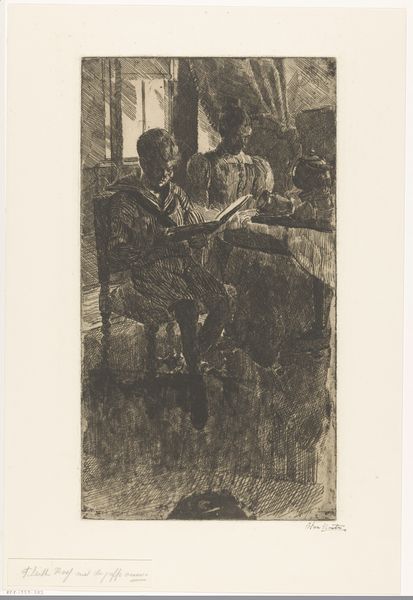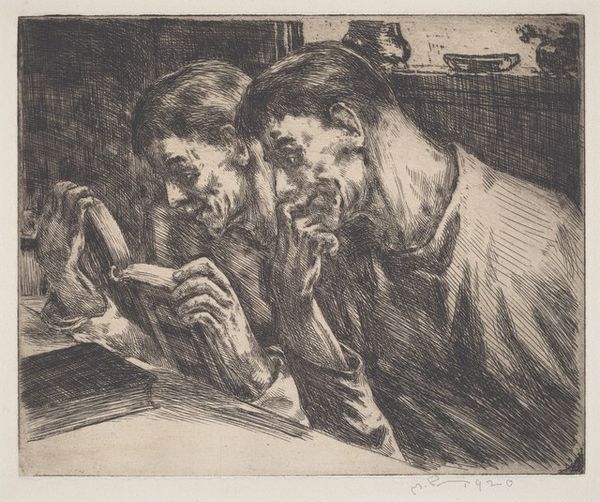
Dimensions: Plate: 5 3/4 × 8 9/16 in. (14.6 × 21.8 cm) Sheet: 7 3/8 × 10 1/4 in. (18.7 × 26 cm)
Copyright: Public Domain
Curator: Before us is "The New Ballad," an etching created anonymously sometime between 1903 and 1924. Editor: The contrast between the deep blacks and paper white gives it an intimate, almost conspiratorial air. It looks like a clandestine meeting captured in fleeting strokes. Curator: Absolutely, and the material conditions would have definitely shaped that feel. This being an etching, the image was incised onto a metal plate, probably copper or zinc, which then held the ink. The act of pulling the print itself involves labor and specialized knowledge. It moves the creation of art away from singular genius and into a more communal realm. Editor: Precisely. If we focus on the formal properties, observe how the composition directs our eye toward the central figure. Her face is highlighted, and all lines converge to this central point, even though they all huddle in a circle. Semiotically, it makes this a study on perception. Curator: I see it more in terms of the social interaction. Are they performing some sort of labor? What role do class and gender play in the interpretation of this "ballad," whatever it is they are reading? The consumption and distribution of these images are equally interesting. Editor: Indeed, but isn't it interesting how the rough, almost unfinished quality emphasizes the process, making it more about the gaze of the artist rather than some perfectly idealized rendition of people? Curator: You see that "unfinished" quality, I think, stems from this work being, first and foremost, a commercial object with very utilitarian roots that needed to appeal to people and address them in easily accessible language. Editor: Ultimately, what intrigues is the tension between representation and the actual work involved in producing the print. It encourages close attention and thought to artmaking. Curator: I agree. I find that exploring the context opens the door for fascinating research that reconsiders the role of labor and commerce in art production.
Comments
No comments
Be the first to comment and join the conversation on the ultimate creative platform.
